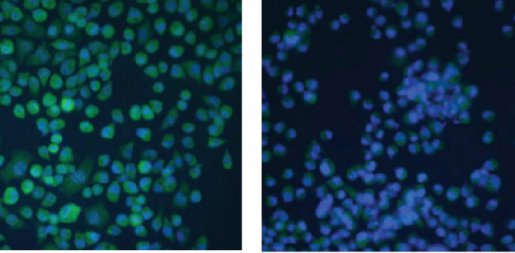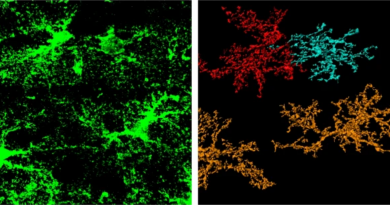Research reveals markers of chemotherapy resistance and outcome in triple negative breast cancer

“Triple negative breast cancer (TNBC) is the most difficult to treat form of breast cancer,” said Dr. Meenakshi Anurag, assistant professor of medicine at the Lester and Sue Smith Breast Center at Baylor College of Medicine. “Standard treatment requires multiple chemotherapy drugs that unfortunately often fail to cure the patient. It is imperative that we develop approaches to predict response so that only effective treatments are given. The discovery of therapeutic alternatives will depend on new insights into how TNBC arises.”

In the current study, Anurag and her colleagues at Baylor, the Broad Institute of MIT and Harvard and clinicians at Washington University in St. Louis looked to identify biological markers in triple negative breast cancer (TNBC) that are associated with resistance to chemotherapy treatment.
Comparing treatment-responsive and treatment-resistant tumors
The research team used an innovative analytic approach called “microscaled proteogenomics” that they previously developed (Satpathy et al, 2020) to analyze tumor biopsies taken from TNBC patients prior to treatment with carboplatin and docetaxel combination chemotherapy. Data from standard DNA and RNA sequencing approaches were integrated with mass spectrometry-based proteomics and phosphoproteomic analyses to derive more complete molecular portraits of treatment-responsive versus treatment-resistant tumors.
“The proteomic analysis of pretreatment biopsies uniquely revealed metabolic pathways that were associated with resistance to treatment, including fatty acid metabolism,” said Anurag, first and co-corresponding author of the work and also a member of Baylor’s Dan L Duncan Comprehensive Cancer Center.
When the team considered both proteomics and gene expression data together, they observed that sensitivity to chemotherapy was marked by higher DNA repair signatures, interferon gamma signaling and immune checkpoint components. These data suggest a multi-omics predictor for chemotherapy response is within reach.
The team then conducted analyses that triangulated treatment response, chromosomal deletion or gain and concordant decreases or increases in mRNA and protein expression. This led the team to determine that a deletion on chromosome 19, located in a region called 19q13.31-33, was associated with resistance to chemotherapy treatment. Of the hundreds of genes deleted in this location, expression of the DNA ligase gene LIG1 was one of the mostly consistently suppressed genes at both the mRNA and protein level. In model systems, and in other TNBC data sets, loss of expression and/or deletion of LIG1 was associated with selective carboplatin resistance and poor clinical outcome.
“LIG1 loss was also associated with poor prognosis in other cancer types, showing that this deletion has broader clinical significance,” Anurag said. The researchers are currently working on clinical grade assays to confirm that LIG1 loss can be safely used to direct carboplatin chemotherapy in TNBC.


Dr. Matthew Ellis, a McNair Scholar at Baylor and director of the Lester and Sue Smith Breast Center at the time of this research, and Dr. Steve Carr, senior director of the Proteomics Platform and an institute scientist at Broad, who together orchestrated the analysis, said, “This groundbreaking study clearly reveals the power of combining microscaled proteogenomic analyses with careful clinical research to produce new insights into the nature of cancer.”
LIG1 is a critical component of lagging strand DNA synthesis that connects Okazaki fragments (small DNA segments that must be connected to complete the synthesis reaction). Interestingly, the lagging stand DNA polymerase POLD1 is frequently co-deleted with LIG1, suggesting a multigenic mechanism is in play. Lagging-strand synthesis components are generally considered essential to cellular survival but here reductions in the levels of these enzymes are associated with marked chromosomal instability in multiple cancer types and selective carboplatin resistance in TNBC. Mechanistic studies are underway to determine how the genome is destabilized and how tumors with LIG1 deletion can be more effectively treated.

“This is an exciting result that is a testament to the remarkably close collaboration between patients, oncology care teams and laboratory scientists. In our view, proteogenomic analyses should be routine in clinical trials to discover clinically useful biomarkers, new biological insight and therapeutic hypotheses,” said Dr. Shankha Satpathy, co-corresponding author of the study and senior group leader at in the Proteomics Platform at Broad.
The study is published in the journal Cancer Discovery and was funded by the National Cancer Institute’s Clinical Proteomics Tumor Analysis Consortium (CPTAC).
Find the complete list of contributors, their affiliations, conflicts of interest and financial support for this project in the publication. Matthew Ellis is currently a full-time employee of AstraZeneca.
Baylor College of Medicine and Broad Institute of MIT and Harvard



